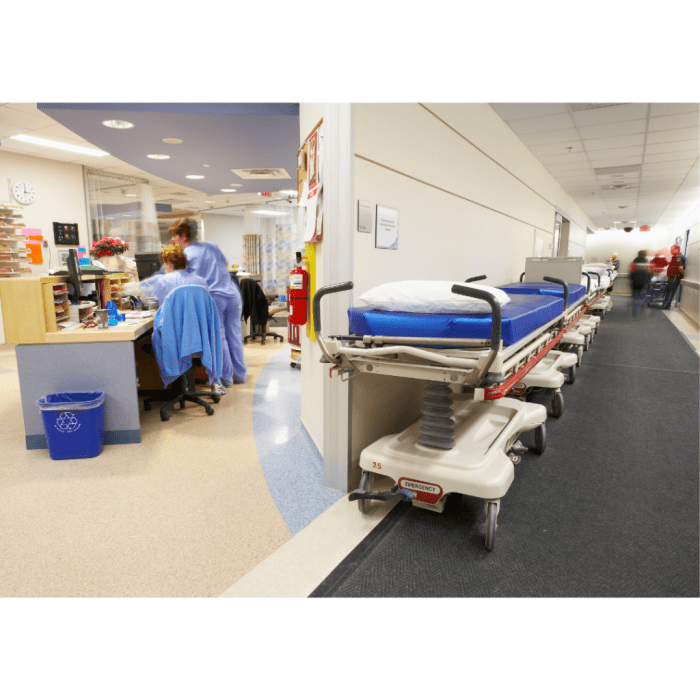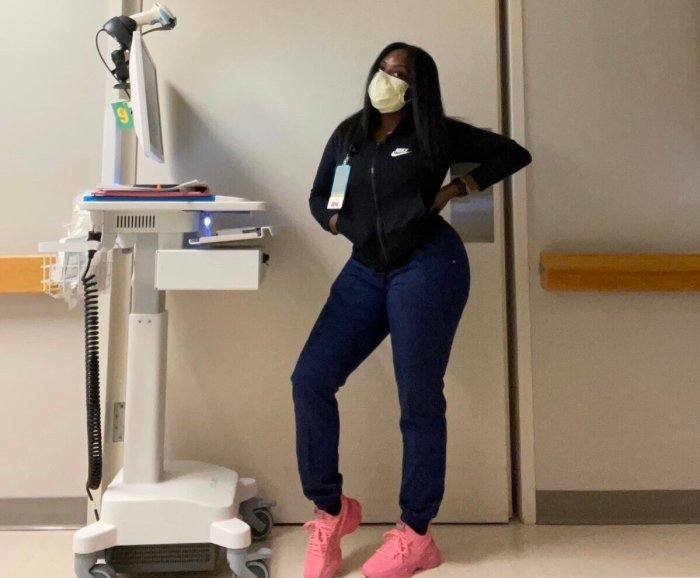A nurse working the 7pm to 7am shift faces unique challenges and rewards that shape their professional experience. This demanding shift requires nurses to navigate the complexities of overnight patient care, teamwork, and self-care.
The night shift offers opportunities for nurses to develop specialized skills, foster collaboration, and make a significant impact on patient outcomes. Understanding the intricacies of this shift is crucial for nurses seeking to excel in this demanding yet fulfilling role.
Work Environment
Working the 7pm to 7am shift as a nurse presents unique challenges and rewards. The nocturnal nature of the shift requires nurses to adapt to an altered sleep-wake cycle, potentially disrupting their circadian rhythms.
The shift often involves managing acute patient care, requiring nurses to be alert and responsive during the night hours. This can lead to increased cognitive and physical demands, as well as heightened levels of stress and responsibility.
Impact on Physical and Mental Health
Shift work has been associated with various health implications. Nurses working the 7pm to 7am shift may experience:
- Sleep disturbances, including insomnia and excessive daytime sleepiness
- Increased risk of cardiovascular disease, metabolic disorders, and gastrointestinal issues
- Emotional and psychological challenges, such as mood swings, irritability, and anxiety
Coping Strategies, A nurse working the 7pm to 7am shift
To mitigate the challenges of the 7pm to 7am shift, nurses can implement several coping strategies:
- Maintaining a regular sleep schedule on non-work days to minimize circadian disruption
- Getting adequate sunlight exposure during the day to regulate the body’s natural sleep-wake cycle
- Engaging in stress-reducing activities, such as exercise, yoga, or meditation
- Seeking support from colleagues, family, or mental health professionals as needed
Patient Care: A Nurse Working The 7pm To 7am Shift

During the 7pm to 7am shift, nurses encounter a diverse range of patients and conditions. These may include:
- Patients with acute illnesses or injuries requiring immediate medical attention, such as heart attacks, strokes, or trauma.
- Patients with chronic conditions, such as diabetes, heart failure, or COPD, who require ongoing monitoring and management.
- Patients recovering from surgery or other procedures, who require close observation and support.
Providing care to patients during the night shift presents unique considerations and challenges:
- Reduced staffing levels:Fewer nurses and other healthcare professionals are typically available during the night shift, which can impact the availability of immediate assistance.
- Increased workload:Nurses may have a higher patient-to-nurse ratio during the night shift, requiring them to manage multiple patients simultaneously.
- Patient vulnerability:Patients may be more vulnerable during the night shift due to reduced supervision and increased likelihood of falls or other incidents.
To ensure patient safety and quality of care during the night shift, nurses must adhere to best practices, including:
- Prioritizing patient needs:Nurses must carefully assess each patient’s condition and prioritize their care based on urgency.
- Communicating effectively:Nurses must communicate clearly and effectively with patients, family members, and other healthcare professionals to ensure a smooth and safe transition of care.
- Utilizing technology:Nurses should use technology, such as electronic health records and communication devices, to enhance patient care and safety.
Teamwork and Collaboration
Teamwork and collaboration among nurses working the 7pm to 7am shift are crucial for providing safe and efficient patient care. During the night shift, the number of healthcare professionals available is typically lower, and the acuity of patients may be higher.
This necessitates effective communication and coordination among nurses and other members of the healthcare team.
Roles and Responsibilities of Healthcare Team Members
The healthcare team during the night shift typically includes nurses, physicians, respiratory therapists, and nursing assistants. Each member of the team has specific roles and responsibilities, and they must work together to ensure that patients receive the care they need.*
Nurses: Nurses are responsible for providing direct patient care, including monitoring vital signs, administering medications, and providing wound care. They also collaborate with other members of the healthcare team to develop and implement patient care plans.
Physicians
Physicians are responsible for diagnosing and treating patients. They also provide orders for medications and other treatments.
Respiratory therapists
Respiratory therapists are responsible for providing respiratory care to patients, including oxygen therapy and mechanical ventilation.
Nursing assistants
Nursing assistants provide basic patient care, such as bathing, dressing, and feeding. They also assist nurses with other tasks, such as taking vital signs and administering medications.
Communication and Coordination Strategies
Effective communication and coordination are essential for teamwork and collaboration among night shift nurses. Some strategies that can be used to improve communication and coordination include:* Using a standardized communication system, such as SBAR (Situation, Background, Assessment, Recommendation).
- Holding regular team meetings to discuss patient care plans and any concerns.
- Using a shared electronic health record (EHR) to document patient information and track progress.
- Establishing clear lines of authority and responsibility.
- Providing ongoing training and support to nurses to ensure that they are competent in their roles and responsibilities.
Technology and Equipment

Nurses working the 7pm to 7am shift rely on various essential technologies and equipment to provide optimal patient care and enhance their efficiency. These tools play a crucial role in facilitating communication, monitoring patient status, and streamlining documentation.
One of the primary technologies used by night shift nurses is the electronic health record (EHR) system. The EHR provides real-time access to patient information, including medical history, current medications, and laboratory results. This centralized system allows nurses to quickly retrieve and review patient data, reducing the risk of errors and improving decision-making.
Another essential tool is the vital signs monitor. This device continuously monitors a patient’s vital signs, such as heart rate, respiratory rate, blood pressure, and oxygen saturation. The monitor alerts nurses to any significant changes in a patient’s condition, enabling prompt intervention and preventing complications.
Communication Devices
Effective communication is vital for nurses working the night shift. They rely on various communication devices to stay connected with patients, colleagues, and other healthcare professionals. These devices include:
- Telephones:Used for direct communication with patients, family members, and other staff.
- Intercoms:Allow nurses to communicate with patients and other staff within the unit.
- Call lights:Patients use call lights to summon nurses when they need assistance.
These communication devices ensure that nurses can respond promptly to patient needs and collaborate effectively with the healthcare team.
Challenges and Opportunities
While technology offers numerous benefits, it also presents certain challenges in the night shift setting. One challenge is the potential for distractions. Nurses may be interrupted by alarms, notifications, or messages, which can disrupt their focus and increase the risk of errors.
To mitigate this, nurses should establish clear priorities and use technology judiciously.
Another challenge is the lack of immediate access to technical support. During the night shift, there may not be IT staff available to assist with technical issues. Nurses should be trained to troubleshoot common problems and have access to backup equipment in case of a device failure.
Despite these challenges, technology also presents opportunities for night shift nurses. For example, the use of mobile devices can enhance communication and access to patient information. Nurses can use smartphones or tablets to review patient charts, communicate with colleagues, and access clinical resources remotely.
This flexibility allows nurses to provide more efficient and timely care.
Professional Development

Nurses working the 7pm to 7am shift have access to various opportunities for professional development and growth. These opportunities enable nurses to enhance their knowledge, skills, and abilities, thereby improving patient care and advancing their careers.Continuing education is crucial for nurses to stay up-to-date with the latest advancements in nursing practice.
Hospitals and healthcare organizations often offer in-service training programs, workshops, and conferences that cover a wide range of topics, including clinical skills, evidence-based practice, and leadership development. Nurses can also pursue online courses or degree programs to further their education and specialize in a particular area of nursing.Balancing
work and professional development commitments during the night shift can be challenging. However, there are several strategies that nurses can employ to make it more manageable. One approach is to schedule study sessions during breaks or downtime. Another strategy is to take advantage of online learning platforms that offer flexible scheduling and allow nurses to study at their own pace.
Additionally, nurses can seek support from colleagues, mentors, or family members to assist with childcare or other responsibilities during study time.
Question & Answer Hub
What are the unique challenges of working the night shift as a nurse?
The night shift often involves working in a quieter environment with fewer staff members, which can lead to increased responsibility and decision-making. Nurses may also experience fatigue, disrupted sleep patterns, and social isolation.
How can nurses cope with the physical and mental demands of the night shift?
Nurses can prioritize sleep by establishing a regular sleep schedule and creating a conducive sleep environment. They can also engage in stress-reducing activities, such as exercise, meditation, or spending time in nature.
What are the best practices for ensuring patient safety and quality of care during the night shift?
Nurses should prioritize thorough patient assessments, effective communication with the healthcare team, and meticulous documentation. They should also utilize technology to enhance patient monitoring and streamline care delivery.